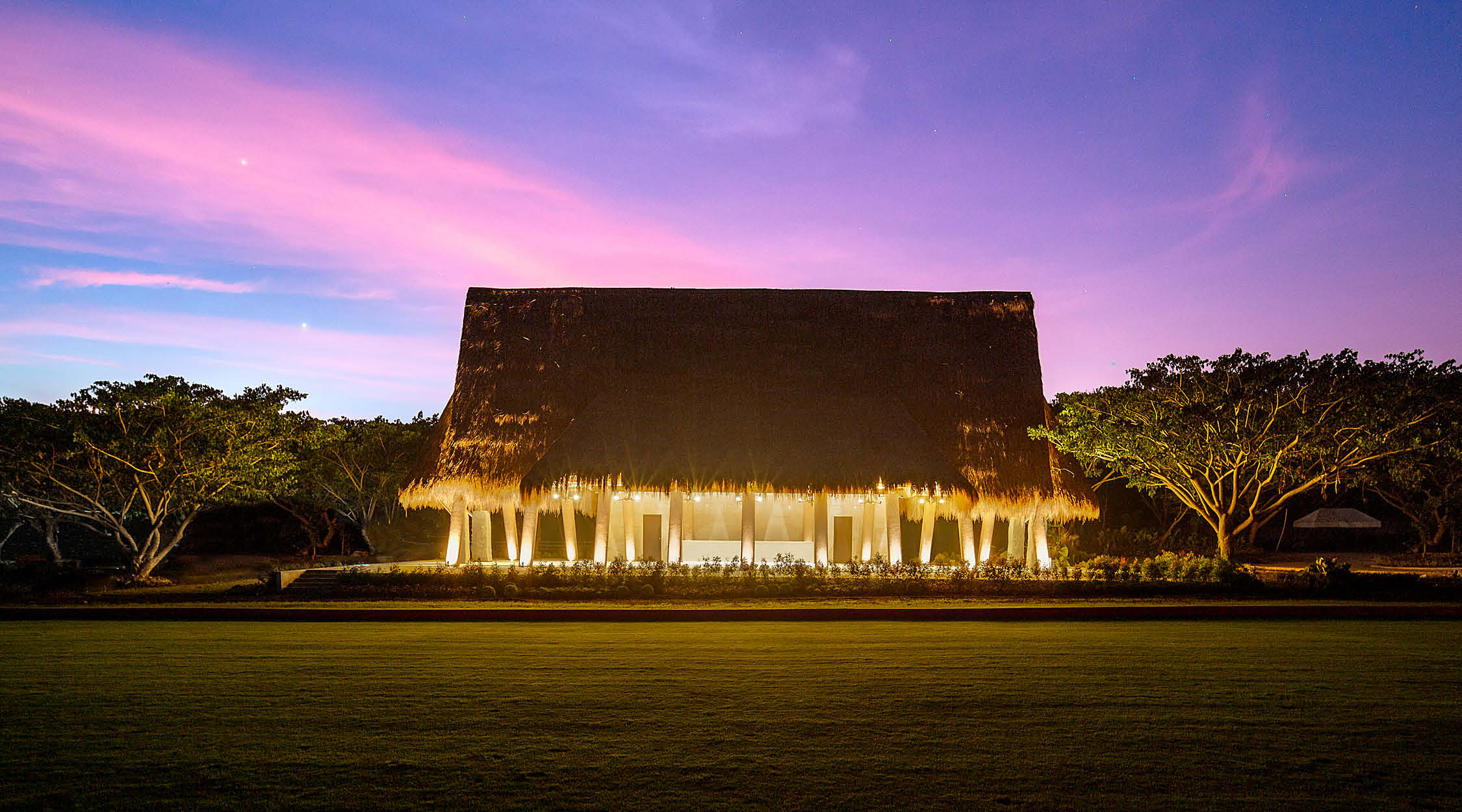
The MLR Polo Pavilion: A Golden Glory Portraying The Filipino’s Resilience
The Filipino bahay kubo existed long before any of the foreign occupations that profoundly impacted Philippine architecture. It is constructed from native materials like nipa (a type of palm fiber), grass, local wood, and bamboo. The bahay kubo may not have been the most durable shelter, especially during typhoons, but in one way or another, it helped builders understand how each material performed.
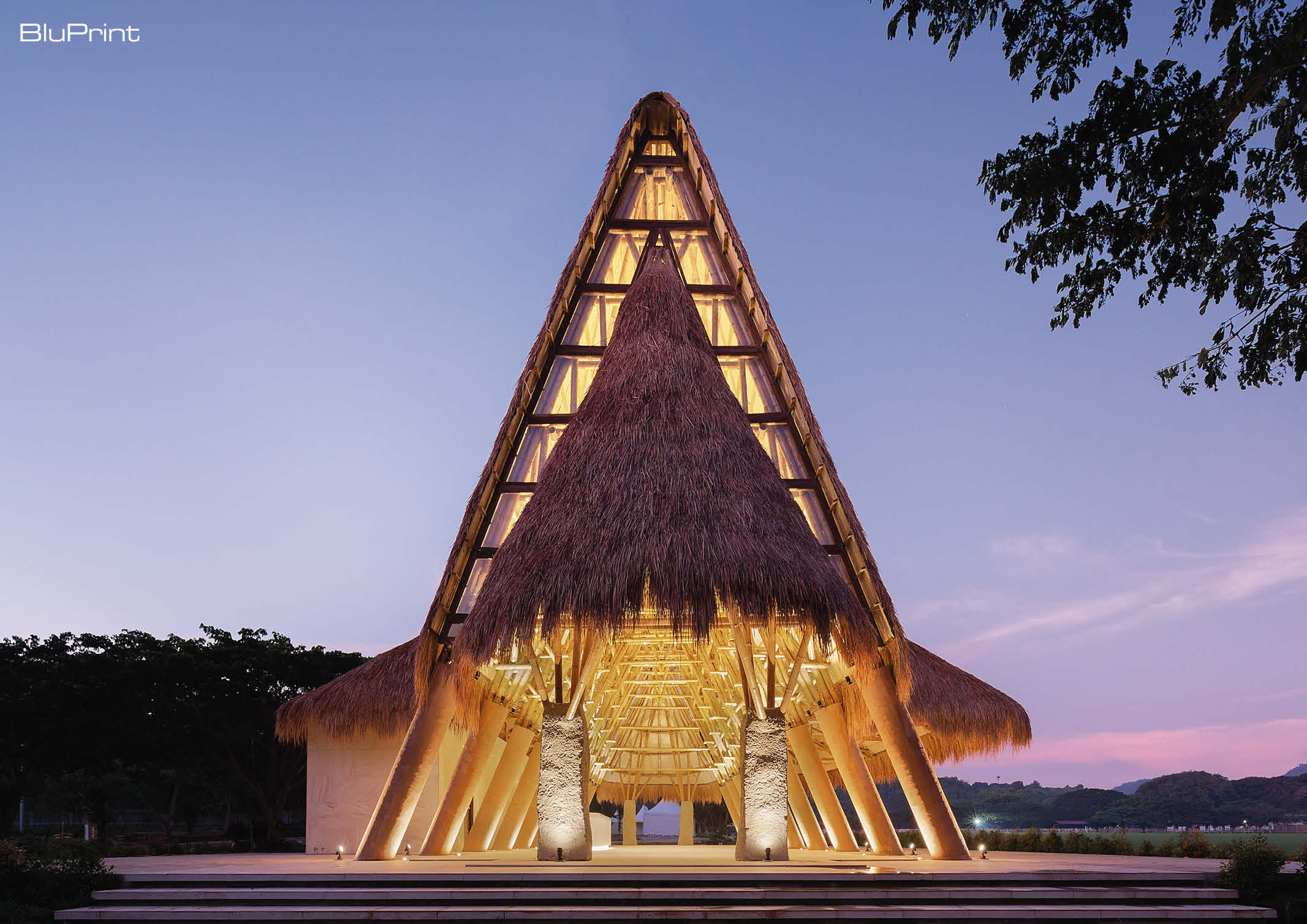
One of the more resilient local materials used in the hut’s construction is bamboo, which has been developed over time to serve more creative purposes. It is inexpensive, requires less energy during construction, has built-in insulation, and is incredibly durable and flexible when properly treated. Since it is a renewable natural resource that grows faster than trees, it is a sustainable material that can be used for a variety of purposes. Aside from being used as a construction material, it has found extensive application in the trade industry, like furniture, textiles, paper goods, and even musical instruments.
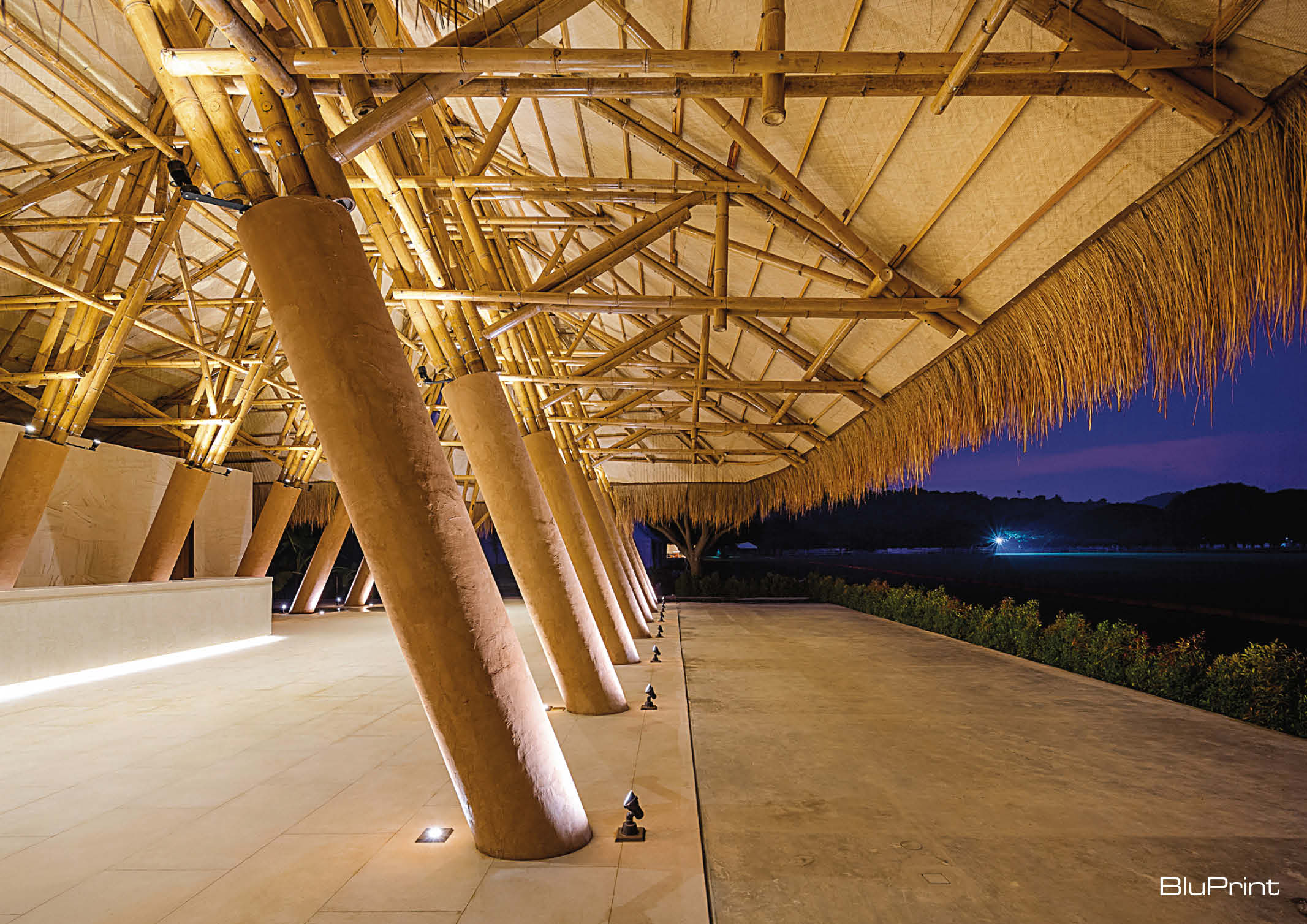
There has been a dramatic increase in the number of commercially available bamboo products in recent years. Due to its biodegradability, bamboo has been demonstrated to be a practical substitute for plastic as the world fights to reduce waste pollution. As a building material, bamboo has proven to be a great alternative to timber. The advantages of using bamboo lie in its tensile strength, weight, and cost-effectiveness. Moreover, the material’s high silicate acid component makes it capable of withstanding high temperatures. Being elastic, it can be used as a viable alternative to other construction materials in seismically active regions.
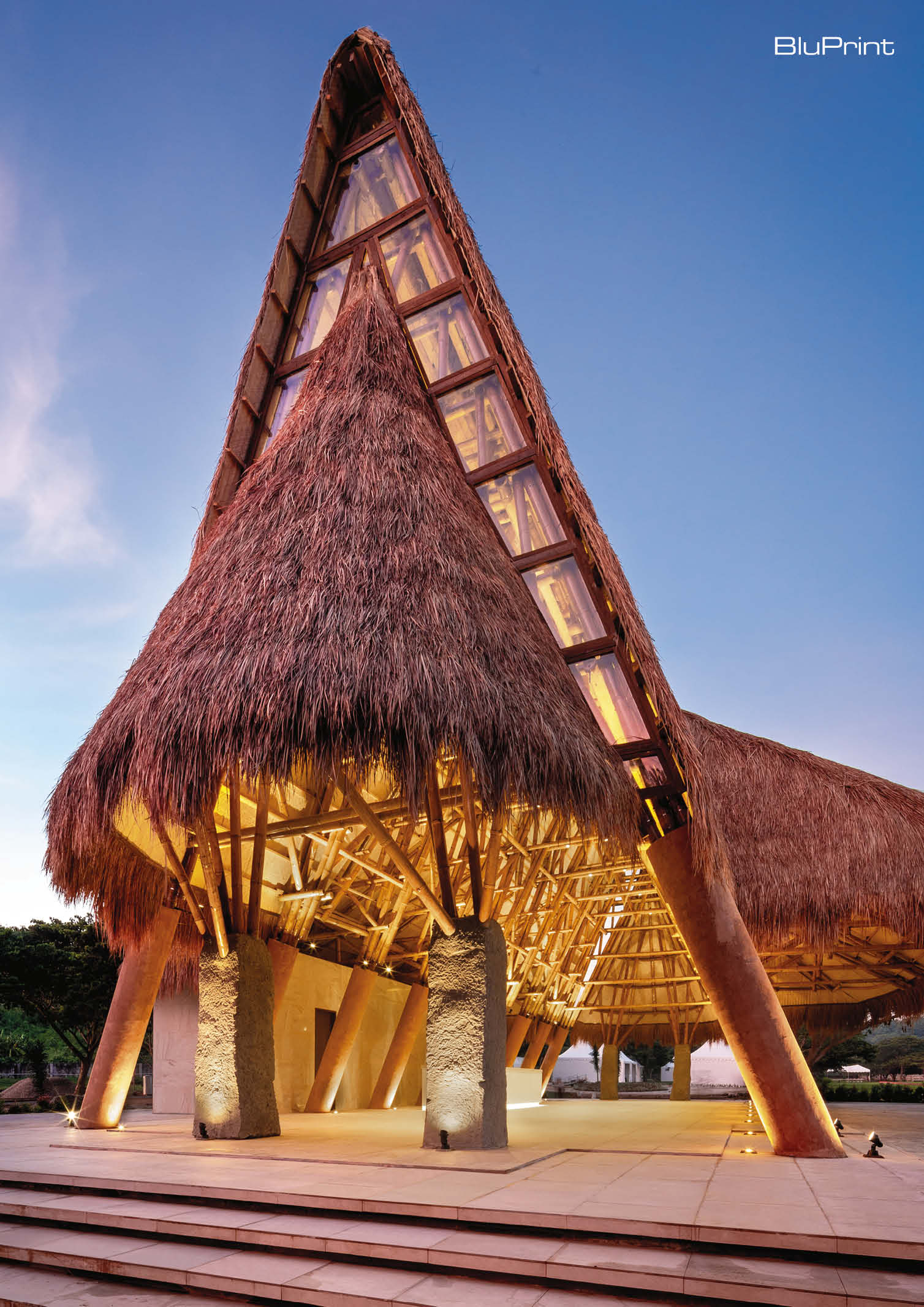
Sangay Architects is one of the architectural firms in the Philippines that has been a vocal advocate for bamboo construction. The firm promotes innovative and contemporary ways of building with bamboo. The company promotes modern vernacular Filipino design by incorporating culturally significant and locally abundant materials like bamboo into their creations.
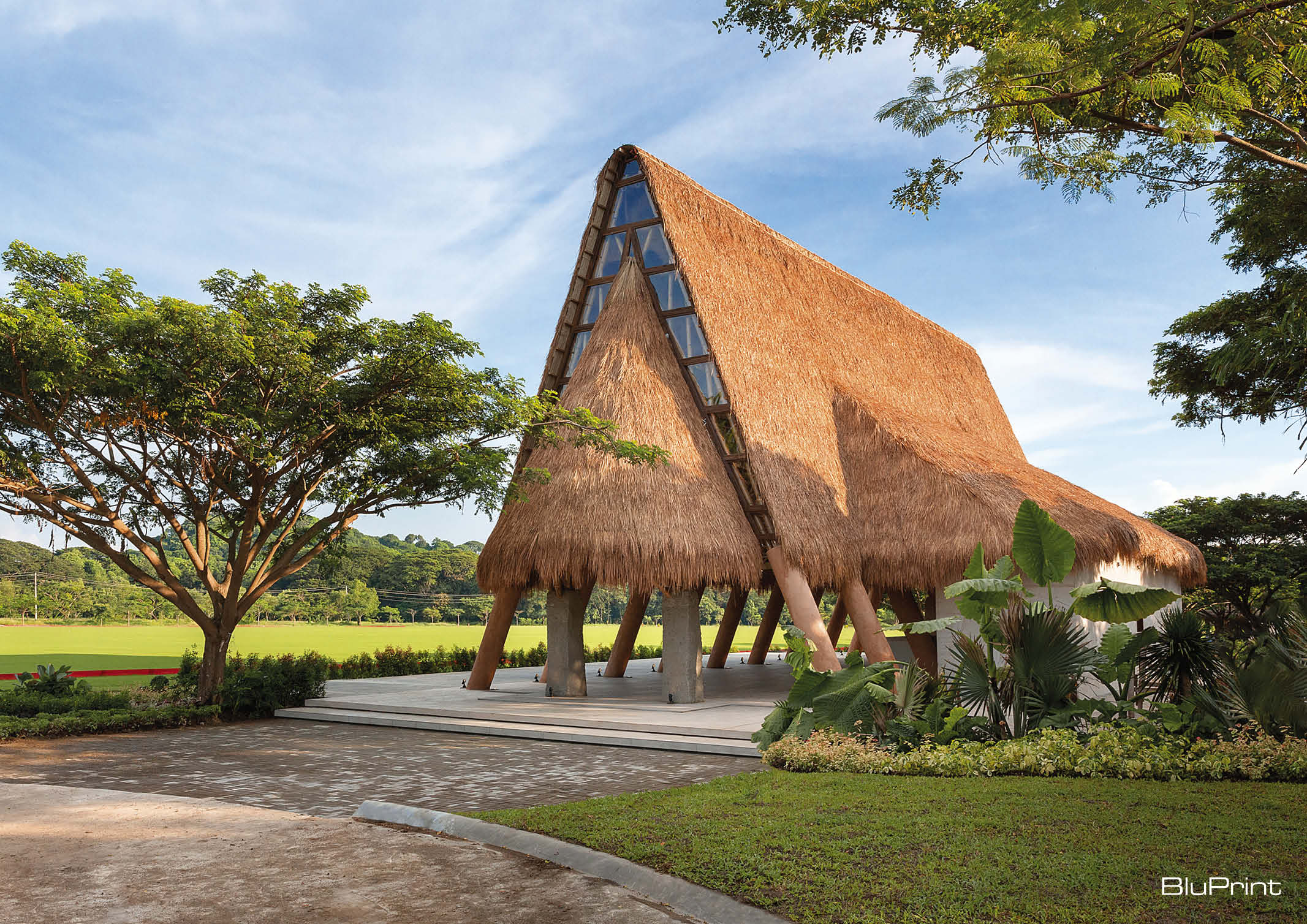
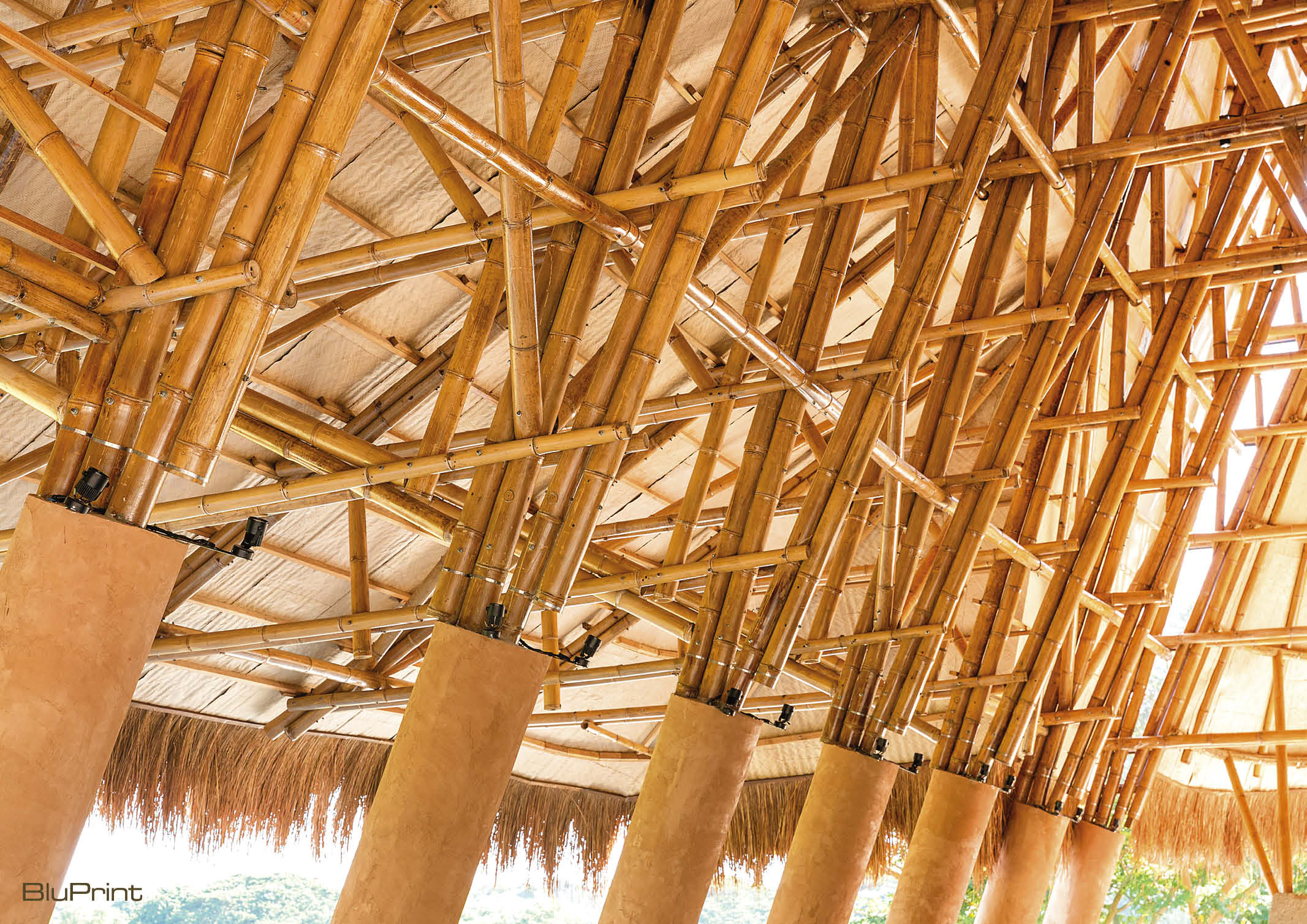
With an extensive portfolio showcasing creative utilization of the local material, it is no doubt they were chosen to construct the MLR Polo Pavilion. They were given instructions to design a venue for the 2019 Southeast Asian Games, specifically for the use of VVIPs like the Sultan of Brunei and the King of Malaysia. The team was tasked with designing a building that would spark feelings of national pride among Filipinos, and they succeeded. The finished bamboo pavilion glowed with golden splendor, but its very air was one of modesty. It came to symbolize the resilience of the Filipino people—it bends but does not break.
Discover more about how Sangay Architect used the “poor man’s timber” in the MLR Polo Pavilion.
Download your copy now! Click on the link for BluPrint Vol. 2 2022: THE ART OF MAKING.
Photos by Marc Go


